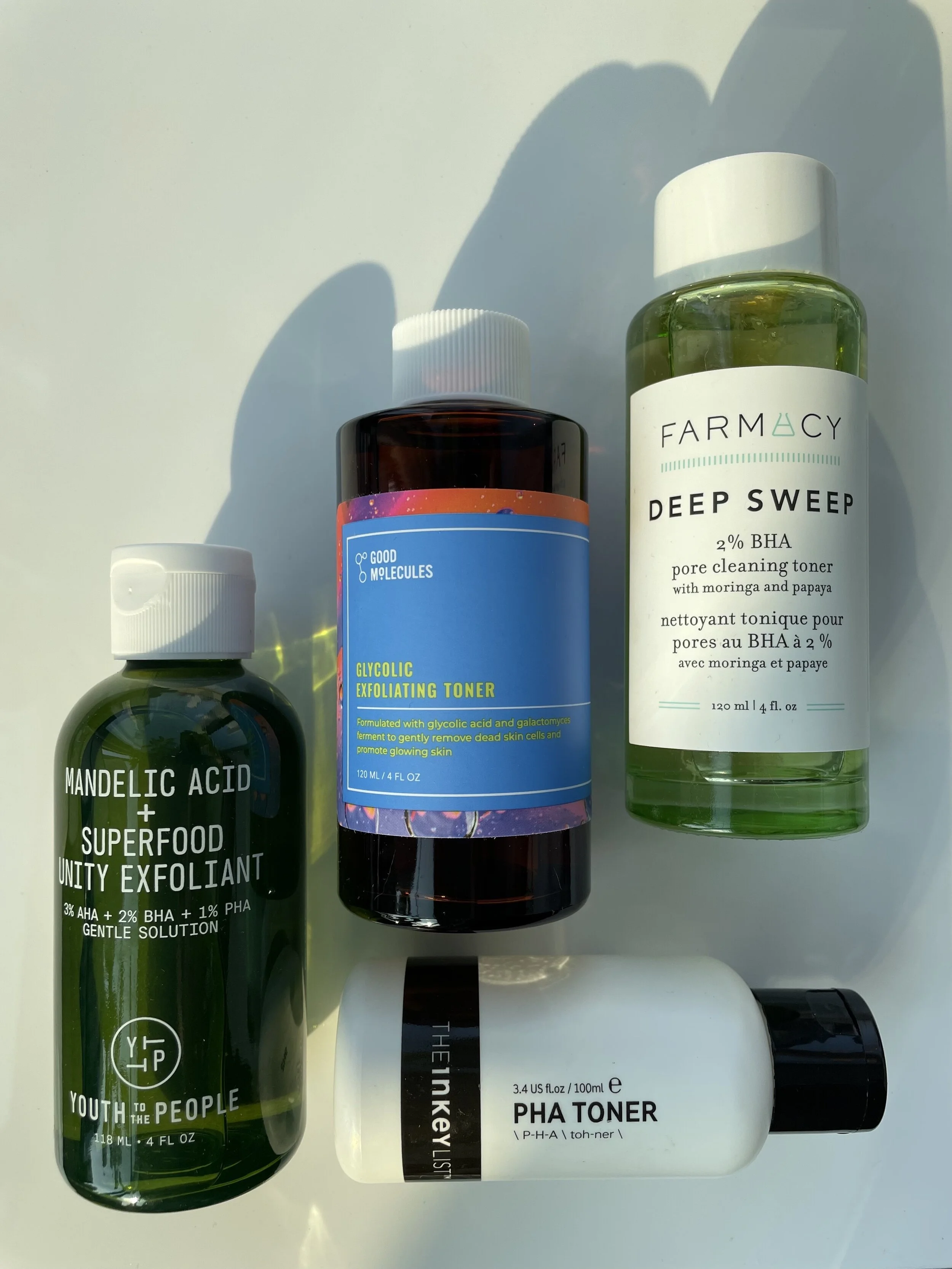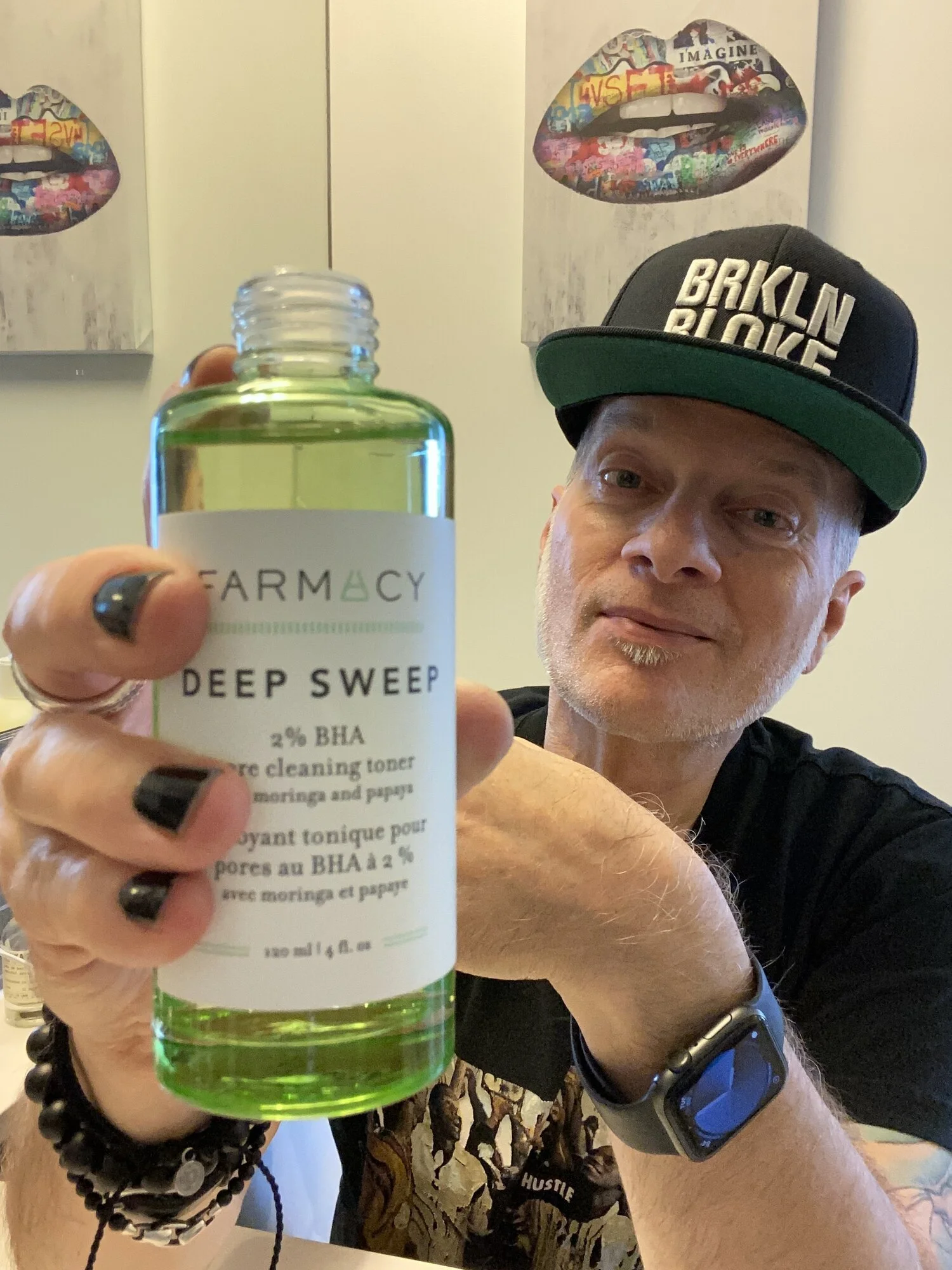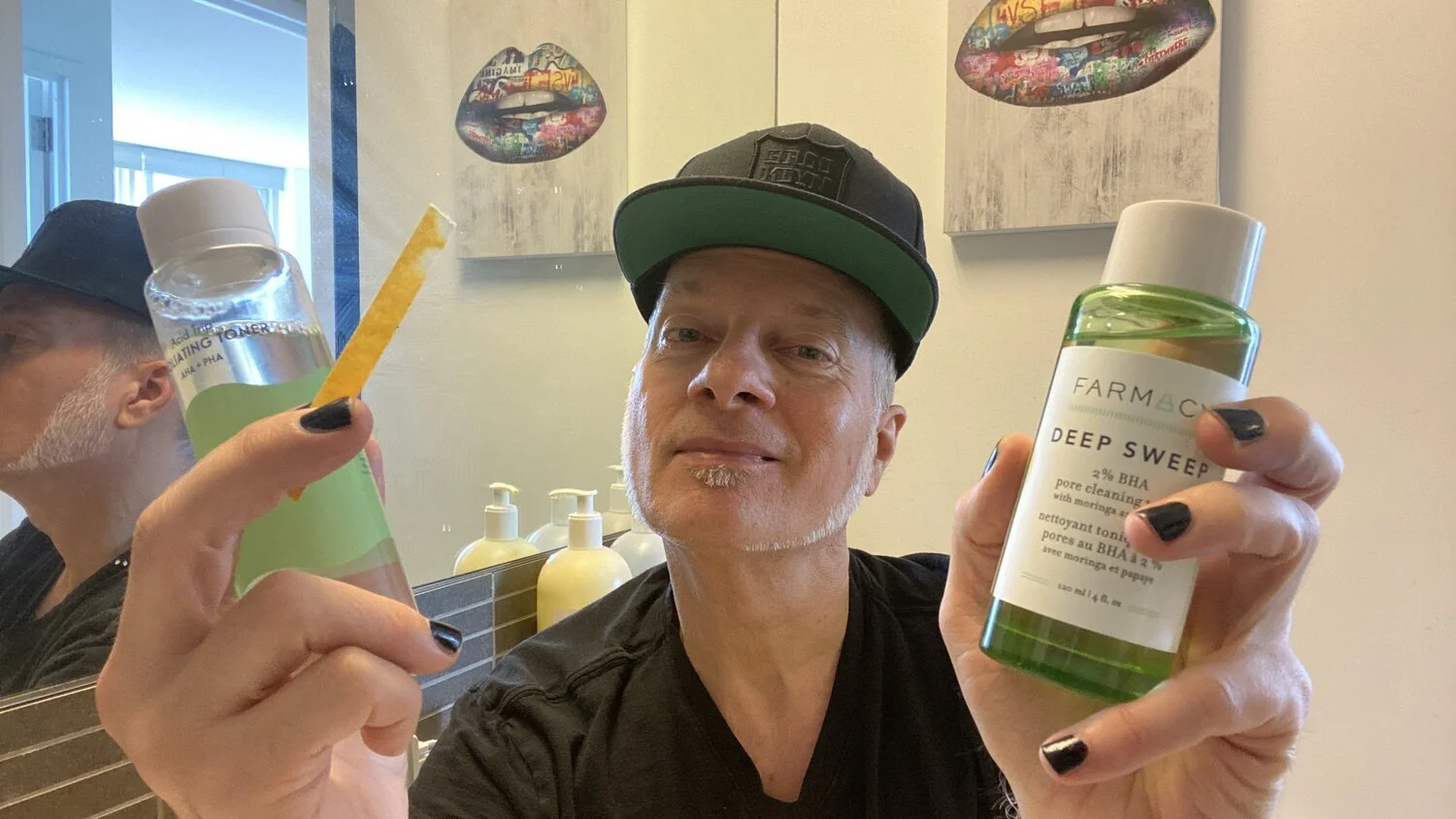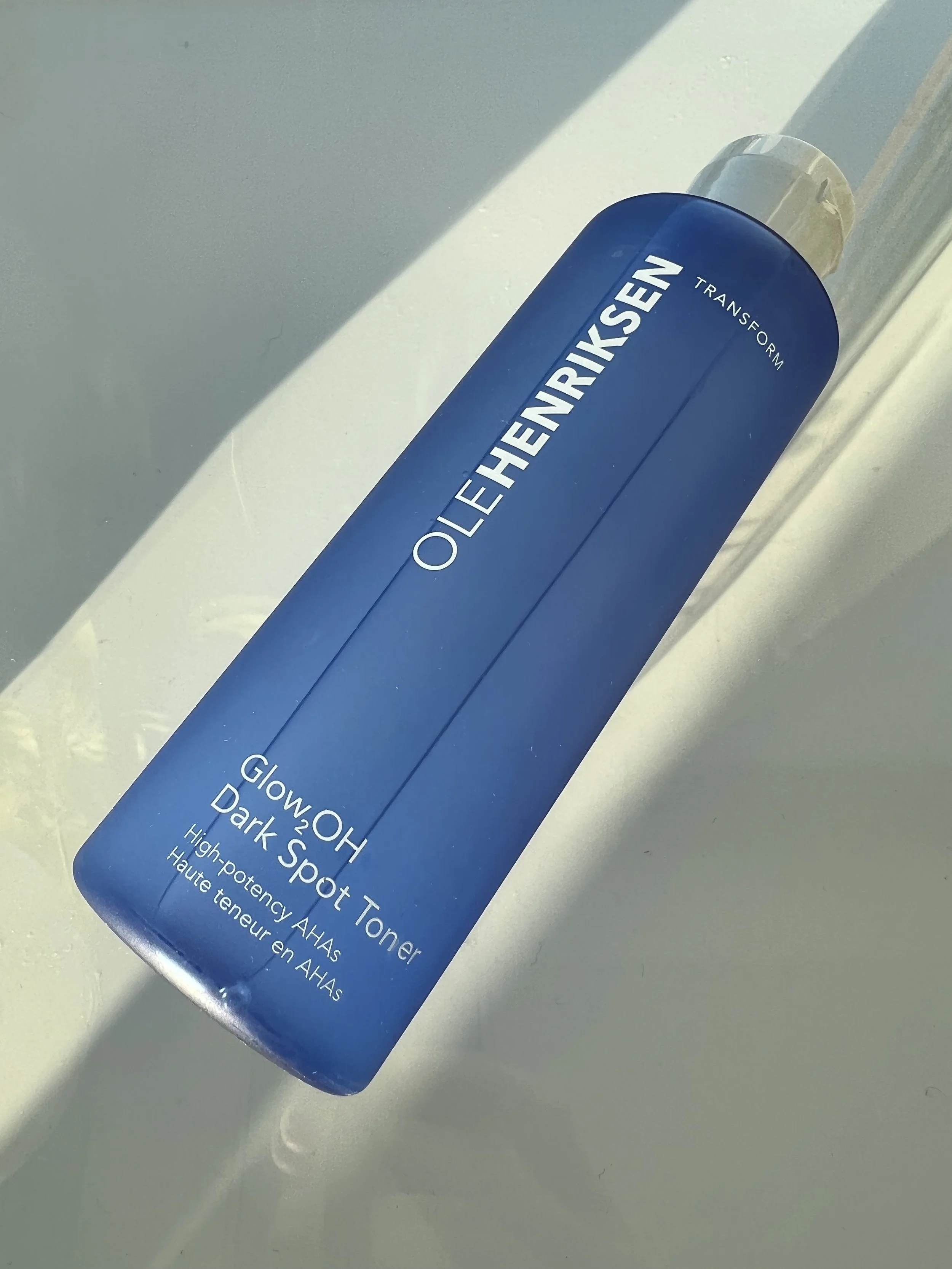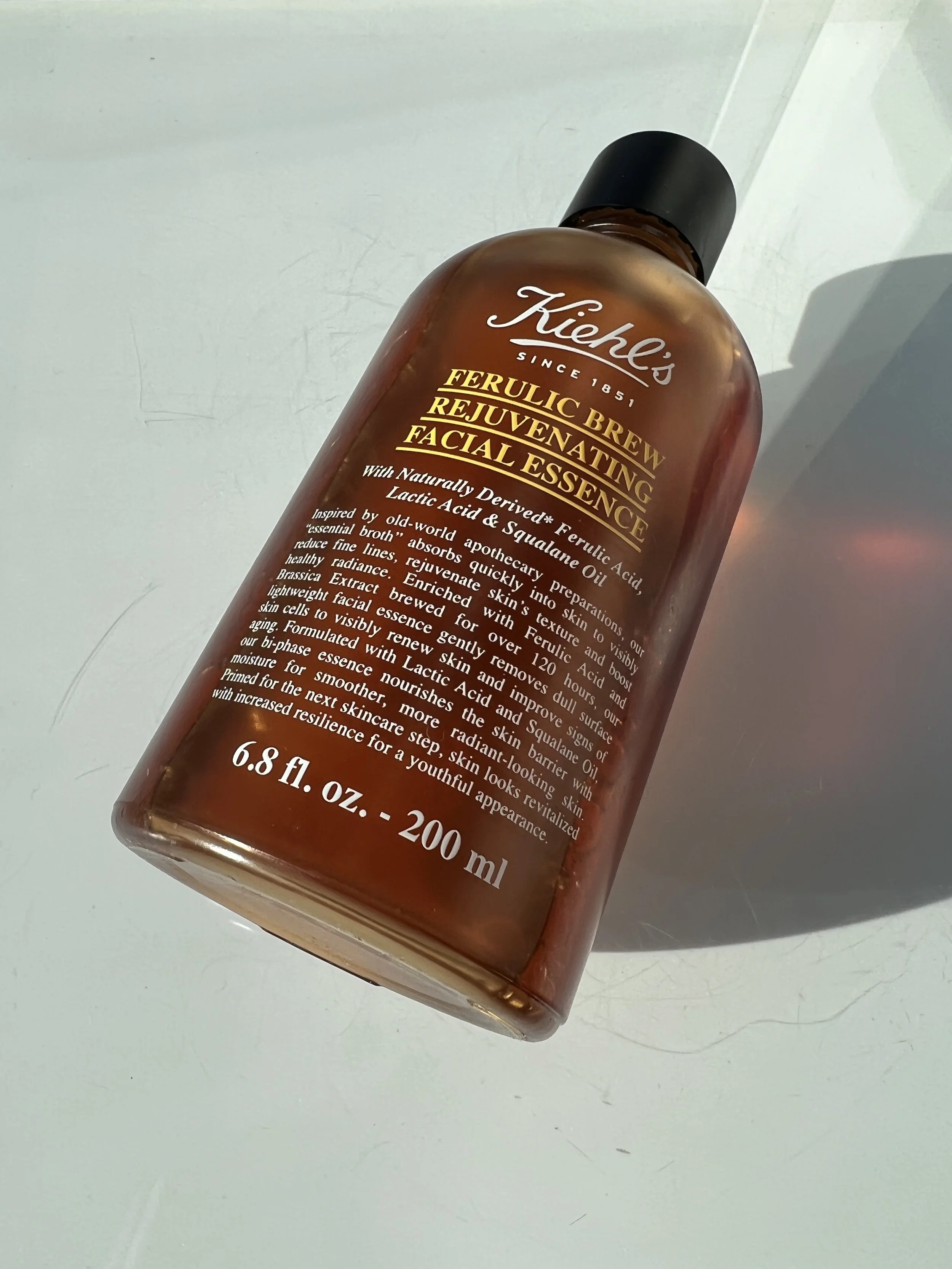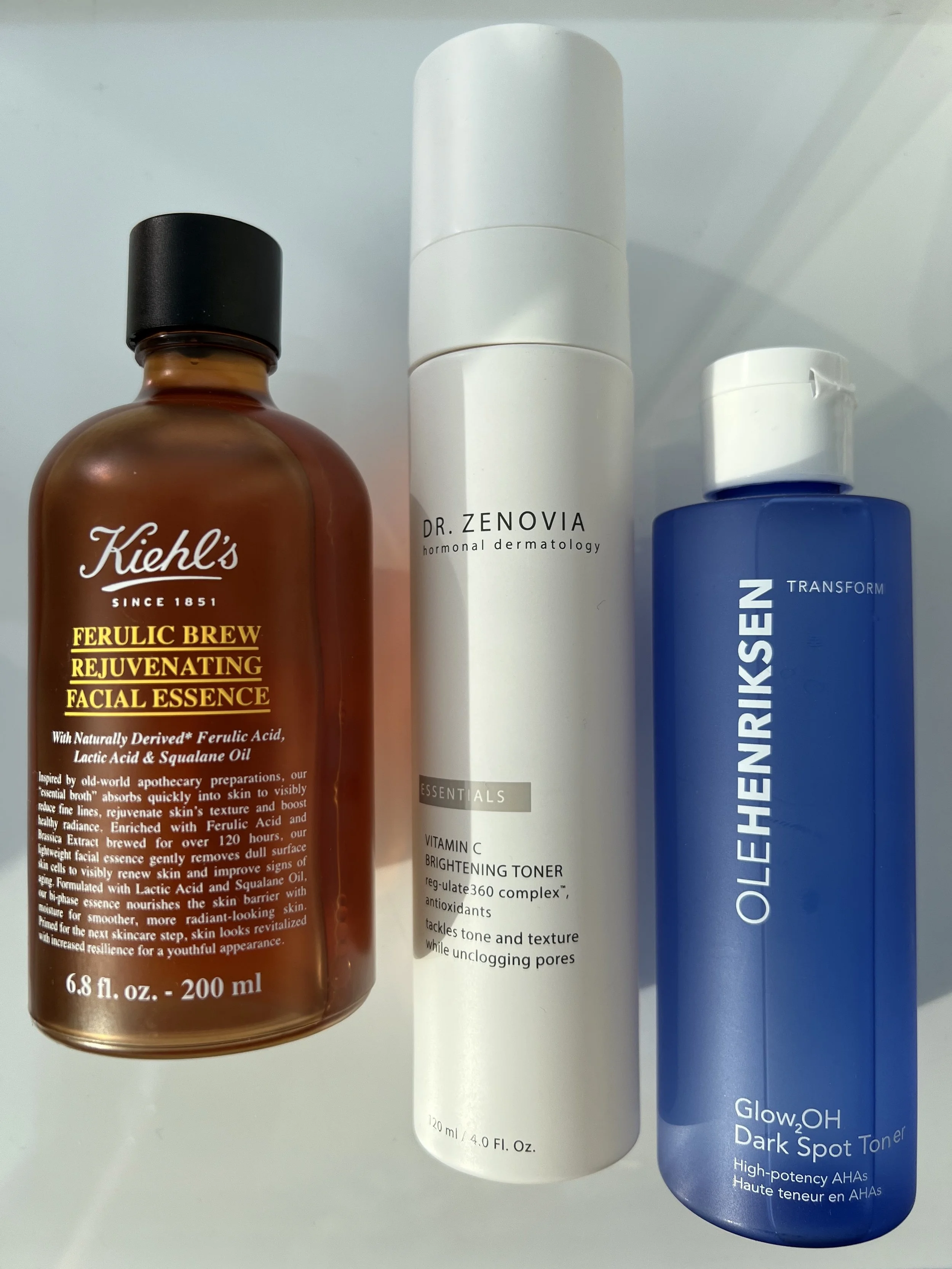PRODUCT REVIEW: DR. ZENOVIA SKINCARE VITAMIN C BRIGHTENING TONER – BEST VITAMIN C TONER, BEST BRIGHTENING TONER
DR. ZENOVIA SKINCARE | VITAMIN C BRIGHTENING TONER
This product review was originally part of my blog article titled, Three New Treatment Toners I'm into from Kiehl's, Dr. Zenovia and Ole Henriksen. You can catch the full piece here.
—
I love diversifying my skin care with the change of seasons and a change in my mood. And I love, love, love toners.
I alternate between hydrating toners and more active treatment toners in my skincare routine — and often use one of each, one after the other. As crazy as it may sound, it is not uncommon for me to use three different toners in a routine: an antioxidant toner, a hydrating toner, and a treatment toner powered by an exfoliating acid.
I think toners are wildly misunderstood. The funny thing about toners is that not all are created equal — or do the same thing. There are two major types of toners: hydrating toners and acid, or treatment toners. The two are not mutually exclusive; that is, you don’t use one or the other. While they’re both called toners, they have completely distinct purposes and benefits for the skin.
But my favorite toner is an antioxidant toner: NIOD’s Superoxide Dismutase Saccharide Mist. As with everything NIOD offers, the Superoxide Dismutase Saccharide Mist isn’t just some run-of-the-mill skincare product; and it’s much more than a hydrating toner. (NIOD denies that SDSM2 is a toner at all.)
PRODUCT REVIEW: NIOD SUPEROXIDE DISMUTASE SACCHARIDE MIST (SDSM2) - BEST ANTIOXIDANT TONER
SDSM2 is enriched with Superoxide Dismutase — a naturally occurring antioxidant found in the skin that’s the body’s most essential antioxidant to fend off cell damage. I use it religiously immediately after cleansing, day and night. Be sure to catch my review of it on the blog here.
Every skincare routine, morning and evening, should consist of a hydrating toner — applied immediately following cleansing. Hydration is a must for skin health, central to a K-beauty routine and IMO essential to a robust and healthy skincare regimen.
A treatment toner, on the other hand, is formulated with any number of beneficial exfoliating acids — usually one or more actives from the class of hydroxy acids — AHAs, BHAs or PHAs. After applying a hydrating toner, if you want to use a treatment toner to exfoliate and boost skin’s desquamation process, you can (and should!).
My latest deep-dive into treatment toners came in the fall in an article titled, Seasonal Skincare Transitioning: Treatment Toners I Love That Make Me Excited For Cold Weather. In it, I featured some of the best exfoliating toners with Glycolic Acid, Salicylic Acid and even Mandelic Acid. You can catch the full article here.
SEASONAL SKINCARE TRANSITIONING: TREATMENT TONERS I LOVE THAT MAKE ME EXCITED FOR COLD WEATHER
One of my favorite products six months later remains the Farmacy Deep Sweep 2% BHA Pore Cleaning Toner with Moringa + Papaya. As far as exfoliating toners go, the Deep Sweep 2% BHA Pore Cleaning Toner is a good, clean formula and among the best Salicylic Acid treatments for face. It’s a safe-for-skin, refreshing, effective treatment toner and a pleasure to use.
As I said in my initial review of it, I’m so impressed by Farmacy’s Deep Sweep BHA toner and really appreciate the pro-skin health approach, making it useful for all skin types, not just those with oily, acne-prone skin who benefit most from Salicylic Acid.
PRODUCT REVIEW: FARMACY DEEP SWEEP 2% BHA PORE CLEANING TONER – BEST SALICYLIC ACID TONER FOR OILY SKIN
But a word of caution…
There are so many things I love about skincare and how skincare products work with the skin. But there’s one entire skincare habit which, while popular, is quite out of control. And that’s exfoliation and the overuse of exfoliating treatments, including acid-powered treatment toners.
Unlike so much of what we do for our skin — including moisturizing, cleansing and protecting from sun damage — the one thing skin does pretty well on its own is the basic function of desquamation.
Every skin cell originating in the lower levels of the skin rises to the surface within 28 days, where it’s freed from the body — like pollen gently floating from wild poppy flowers and disappearing into the air over the horizon.
What Does Desquamation Mean and Why Does Desquamation Occur?
In short, desquamation is a term that encompasses cell regeneration, cell death and exfoliation. More specifically, desquamation is the process by which the skin generates new skin cells and, 28 days or so later, sheds them. Desquamation essentially encompasses the life cycle of a skin cell. A treatment toner formulated with an alpha hydroxy acid like Glycolic Acid can, if formulated properly and at the precise pH level, amplify the cell turnover process.
There’s an excellent, insightful piece on the Very Well Health website titled, Desquamation Process and the Outer Layer of Skin. According to the health site Very Well Health:
Desquamation is the natural process in which skin cells are created, sloughed away, and replaced. The desquamation process happens in the outermost layer of the skin called the epidermis. The epidermis itself has four unique layers. Each of these layers plays a role in desquamation.
Skin Cells are Born
Sometimes called cell turnover, desquamation happens every second of the day, without you even noticing.
New skin cells are created in the stratum germinativum, which is the deepest layer of the epidermis. This layer is also called the basal layer.
Skin cells begin their life as a single layer of thick, column-shaped cells. These cells are responsible for creating every cell of your skin.
The cells in this layer divide. Half of them stay behind in the stratum germinativum. The other cells begin their migration to the skin's surface.
Cells Reach the Surface, Then Slough Off
The skin cells have reached their final destination — the stratum corneum. Once the cells arrive at this uppermost layer of the skin they are essentially dead.
The cells in the stratum corneum are very flat and tightly packed. These flat, dead cells continuously fall away as newer cells push their way to the surface. In this way, your skin is constantly renewing itself.
Where do all of those dead skin cells go? You might be surprised to know that most of the dust in your home is actually made up of dead skin cells.
The entire desquamation process, from cell birth to sloughing away, takes approximately 14 to 28 days.
Because the desquamation process is so efficient and methodical, I don’t believe skin needs or can generally tolerate daily exfoliation — whether chemical or physical. That’s why it’s essential to incorporate multiple toners into your routine. Make a habit of using a toner that hydrates the skin AM and PM and perhaps three or four times per week, apply a treatment toner with an exfoliating acid that works for your skin.
In fact, I don’t use a chemical exfoliant — either a treatment toner or acid-powered serum — more than thrice weekly. Even if skin tolerates excess exfoliation, it doesn’t need it as often as you may think. In fact, our skin doesn’t need us to do anything when it comes to exfoliation.
That said, the kind of exfoliation you can achieve with popular, iconic products like the Sunday Riley Good Genes All-In-One Lactic Acid Treatment or a personal fave, the Paula’s Choice Skin Perfecting 2% Bha Liquid Exfoliant, helps to speed up the process of desquamation. Doing so, leaves the complexion free of dead skin. Dead skin cells aren’t doing you any favors.
PRODUCT REVIEW: PAULA’S CHOICE SKIN PERFECTING 2% BHA LIQUID EXFOLIANT – BEST EXFOLIATING TREATMENT
While AHA and BHA-powered chemical exfoliators are the best acid treatments available, they’re not always the most gentle. And sometimes are no more exfoliating than a hydrating toner. The potency and efficacy of an acid toner is dependent on the pH level of the formula and which of the six alpha hydroxy acids are being used; the most potent being Glycolic Acid, the least, Mandelic Acid.
That said, with an acid-powered treatment toner, it’s best to be a bit more conservative. Don’t over-do it and even if your skin tolerates it, remember that it may not even need it. Again, I like to alternate between an acid toner, a hydrating toner and even an antioxidant toner.
With that, let’s take a look at one of my new fave treatment toner discoveries of the last few weeks…
Dr. Zenovia Skincare | Vitamin C Brightening Toner
One of the more intriguing of my brand discoveries over the last several months has been a rather obscure, relatively unknown dermatologist brand. Dr. Zenovia Skincare offers what the brand terms “hormonal skincare”.
Hormonal fluctuations are not unfamiliar to me. Just over two years ago, I entered what can best be described as “male menopause” — characterized by wild swings in my own hormone levels. With hot flashes, sudden dizziness and, worst of all, intense, days-long migraine attacks, it has been nothing short of a horrible experience.
Fortunately, I haven’t noticed any tangible changes in how my skin behaves, though I know that’s a common experience of many woman, particularly during menopause.
The Best Brightening Serums
So who is Dr. Zenovia? Well, according to the brand she’s a board-certified dermatologist and hormonal skin expert, “committed to researching and developing innovative methods to combat leading skin issues from a 360 holistic perspective, including hormonal balance for healthier skin at every stage of life.”
While I’ve featured several products from Dr. Zenovia Skincare on the @skincarma Instagram page, I haven’t had the chance until now to fully review Dr. Zenovia’s products on the blog. And I think the Dr. Zenovia Skincare Vitamin C Brightening Toner is the perfect one to begin with!
I’ve been using the Dr. Zenovia Vitamin C Brightening Toner for several weeks now and have really found it to be exceptional. But, while it’s positioned as a Vitamin C toner, it’s much more than that — and not exactly a Vitamin C powerhouse.
With what I estimate to be a mere 2% concentration of Vitamin C, I think calling it a “Vitamin C Brightening Toner” is a bit of a misnomer. But that’s not to say it’s not a superb formula. Dr. Zenovia’s Skincare Vitamin C Brightening Toner is simply not a replacement for your Vitamin C serum. Consider it an antioxidant adjunct to a regimen that includes a dedicated Vitamin C serum as well as a face cream with Vitamin C.
The Dr. Zenovia Skincare Vitamin C Brightening Toner is more of a hydrating toner infused with powerful antioxidant botanical extracts and vitamins. Among the most notable plant extracts, and most effective used in skincare, are Chamomile Flower Extract, Camellia Sinensis (Green Tea) Leaf Extract, and Camellia Sinensis (White Tea) Leaf Extract. Additional antioxidants include, of course, Vitamin C in the form of pure Ascorbic Acid, Tocopherol Acetate (Vitamin E), Resveratrol and even Bakuchiol — the natural alternative to Retinol.
Antioxidants are vital to any pro-skin health routine and you can’t get enough of them into your skin each day. Using an antioxidant toner like Dr. Zenovia’s Skincare Vitamin C Brightening Toner is the perfect way to do that. I consider antioxidants to be one leg in the triad of products required to meet skin’s daily needs: hydrators and moisturizers, sunscreen, and antioxidants.
What Are Antioxidants and What Do Antioxidants Do for Skin?
Antioxidants like Vitamin C, Niacinamide, and Ferulic Acid possess numerous benefits for the skin, most notably preventing skin damage and the multiple signs of aging that can result. There’s an excellent article from the experts on the Paula’s Choice Research Team titled, How Antioxidants Fight the Signs of Aging that you can catch here. Following is what I found most relevant:
Antioxidants for Skin Benefits
Antioxidants play a unique role when it comes to diminishing the appearance of fine lines and wrinkles. Years of environmental damage (including unprotected sun exposure—one more reason to apply that broad-spectrum sunscreen!) slowly chip away at skin’s natural ability to look and feel healthy. As this damage builds up, skin gradually loses its ability to recover and bounce back as it once did. It’s not an exaggeration to say that after years of damage, skin becomes overwhelmed, and its “look young systems” begin to slow down.
Antioxidants in skin care step in to help shield skin’s surface from further deterioration by calming stressed skin and defending against the visible effects of pollution —something all of us encounter on a daily basis.
What happens as a result of applying antioxidants to your face is truly impressive: Skin’s appearance begins to turn around! It regains a firmer feel and more even skin tone—and those wrinkles you’re probably not fond of will visibly soften.
Antioxidants for Your Skin: What Results You Can Expect?
Although we know that topical application of antioxidants in skin care helps to shield skin from ongoing environmental assault, the results aren't going to make you look 20 years younger—and they may take time to show up. Reality check: The claims attributed to these wonderful ingredients are more often than not overblown or a big stretch of what scientific research has shown to be true.
It’s best to think of antioxidants as part of a trifecta of beneficial ingredients you can use in skin care products to achieve and maintain visibly firmer, youthful-looking skin. Antioxidants should be joined by skin-replenishing ingredients like ceramides, hyaluronic acid, and glycerin plus a range of skin-restoring ingredients like retinol, peptides, and niacinamide. Together, these types of ingredients play a symphony your skin needs to hear—and you’ll love seeing the results every time you look in the mirror.
The trick is to be consistent with your skincare routine and make absolutely sure you’re protecting your skin from sun exposure every day with a broad-spectrum sunscreen rated SPF 30 or greater—and of course, it should be brimming with antioxidants, your skin’s new best friend.
The Dr. Zenovia Skincare Vitamin C Brightening Toner has a super lightweight texture that’s as light as water and easily layered into any skincare routine immediately after cleansing and before an exfoliating toner and water-based serums.
But what about the hormonal aspect that’s Dr. Zenovia’s field of expertise? According to the brand, it’s linked to a complex called REG-ulate 360 Complex™ that “restores a healthy appearance to hormonally imbalanced skin with a blend of medical-grade actives including resveratrol, vitamin E, green tea, bakuchiol, and genistein (a plant-derived phytoestrogen).”
I’m more down with the fact that the Vitamin C Brightening Toner is a superb antioxidant toner that helps defend the skin from skin-aging damage.
What I like about it: I like that the Dr. Zenovia Skincare Vitamin C Brightening Toner contains a veritable powerhouse of antioxidants in the form of botanical extracts and vitamins, including Vitamin C, Vitamin E, Resveratrol and Bakuchiol. It’s got a wonderful texture that makes it easily layered into any skincare routine.
What I don’t like about it: There’s a small amount of Lavender Oil that can be sensitizing to reactive skin, though I don’t believe it’s enough to be problematic.
Who it’s for: All skin types, except perhaps very sensitive skin.
SHOP THE BLOG: Purchase the Dr. Zenovia Skincare Vitamin C Brightening Toner for $38 here.
The Ingredient List of the Dr. Zenovia Skincare Vitamin C Brightening Toner:
Purified Water, Methyl Gluceth-20, Sodium PCA, Hamamelis Virginiana (Witch Hazel) Extract, Chamomilla Recutita (Matricaria) Flower Extract, Camellia Sinensis (Green Tea) Leaf Extract, Camellia Sinensis (Green Tea) Polyphenols, Camellia Sinensis (White Tea) Leaf Extract, Symphytum Officinale (Comfrey) Extract, Cucumis Sativus (Cucumber) Fruit Extract, Punica Granatum Sterols, Genistein, Aloe Barbadensis Leaf Juice, Tocopherol Acetate, Resveratrol, Bakuchiol, Sea Salt, Ascorbic Acid, Panthenol, Lavandula Angustifolia (Lavender) Oil, Glycerin, Polysorbate 20, Sodium Benzoate, Disodium EDTA, Phenoxyethanol.
WATCH MY VIDEO REVIEW
I’M GETTING #SELFCARESUNDAY LIT! 🔥 POWERING UP MY BRIGHTENING WITH MAYSAMA BEAUTY!
ON MY YOUTUBE CHANNEL HERE
WATCH MY VIDEO REVIEW OF
SKINCARE HACKS: GLYCOLIC ACID IS THE NATURAL DEODORANT THAT WORKS!
ON MY YOUTUBE CHANNEL HERE
WATCH MY VIDEO REVIEW
COOL CLEAN FACIAL SUNSCREENS TO KEEP US SAFE AND SMILING IN THE SUN!
ON MY YOUTUBE CHANNEL HERE
WATCH MY VIDEO REVIEW
THE YEAR’S BEST VITAMIN C SERUMS WITH PAULA'S CHOICE, SUNDAY RILEY, THE INKEY LIST AND MORE!
ON MY YOUTUBE CHANNEL HERE
WATCH MY VIDEO REVIEW
THE BEST HYALURONIC ACID SERUMS FROM PAULA'S CHOICE, THE INKEY LIST, GHOST DEMOCRACY & MORE
ON MY YOUTUBE CHANNEL HERE
WATCH MY VIDEO REVIEW OF
A SELFCARE SUNDAY NOT FOR THE FAINT OF HEART – WITH THE PAULA’S CHOICE 25% AHA PEEL!
ON MY YOUTUBE CHANNEL HERE
WATCH MY VIDEO REVIEW
MY 2021 VITAMIN C PICKS + THE BEST VITAMIN C SERUMS TO BRIGHTEN UP THE COMPLEXION!
ON MY YOUTUBE CHANNEL HERE





